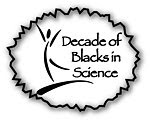Bees are perhaps one of the most interesting urban wildlife creatures. Bees are invertebrate insects belonging to the order Hymenoptera. Hymenoptera include all bees, wasps, hornets, and ants.
Bees like other Hymenopterans are comprised of female-dominated societies. If you’ve ever been stung by one of these creatures it was a female. That’s because the stinger of a bee is a modified ovipositor – or egg laying structure.
In urban areas, most people occasionally encounter bees at the park, open fields, and flower gardens. They can be pesky and even dangerous if you are allergic to bee stings. But bees are also important environmental engineers. Bees help pollinate flowers, trees, and crop plants. When you observe bees buzzing around a field or flowered tree they are doing an important job. Unlike animals, plants can’t move or travel in order to find mates. Bees carry pollen from one flower to another. Pollen is equivalent to sperm of animals. The bees collect nectar of plans and the yellow pollen attaches to their fuzzy abdomen and prickly legs. When they visit the next flower, some of the pollen gets left behind and they pick up new pollen. It’s like an unintentional delivery service for plants.
This seemingly innocent act of transferring pollen is no light matter. Some species plants depend almost entirely on bees for reproduction. That’s why the news of dwindling native bee species is such an alarm. If there are fewer bees or no bees, then we’re in trouble, too. Farmers who grow important crops like wheat, corn, and other grains depend on this simple act of Mother Nature to keep things going. Plus, honey is an important and delicious agriculture product.
So, the next you're outside enjoying the fresh air, keep an eye out for bees. And let me know about your Urban Science Adventures!©
Bees like other Hymenopterans are comprised of female-dominated societies. If you’ve ever been stung by one of these creatures it was a female. That’s because the stinger of a bee is a modified ovipositor – or egg laying structure.
In urban areas, most people occasionally encounter bees at the park, open fields, and flower gardens. They can be pesky and even dangerous if you are allergic to bee stings. But bees are also important environmental engineers. Bees help pollinate flowers, trees, and crop plants. When you observe bees buzzing around a field or flowered tree they are doing an important job. Unlike animals, plants can’t move or travel in order to find mates. Bees carry pollen from one flower to another. Pollen is equivalent to sperm of animals. The bees collect nectar of plans and the yellow pollen attaches to their fuzzy abdomen and prickly legs. When they visit the next flower, some of the pollen gets left behind and they pick up new pollen. It’s like an unintentional delivery service for plants.
This seemingly innocent act of transferring pollen is no light matter. Some species plants depend almost entirely on bees for reproduction. That’s why the news of dwindling native bee species is such an alarm. If there are fewer bees or no bees, then we’re in trouble, too. Farmers who grow important crops like wheat, corn, and other grains depend on this simple act of Mother Nature to keep things going. Plus, honey is an important and delicious agriculture product.
So, the next you're outside enjoying the fresh air, keep an eye out for bees. And let me know about your Urban Science Adventures!©
photo credit: www.bloglifetime.com
















No comments:
Post a Comment